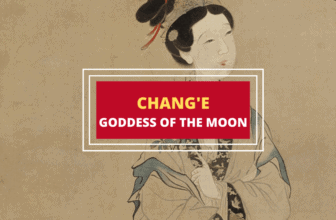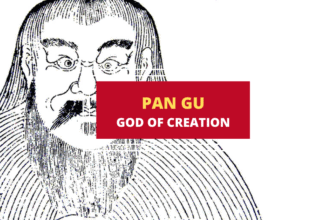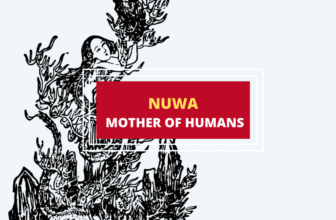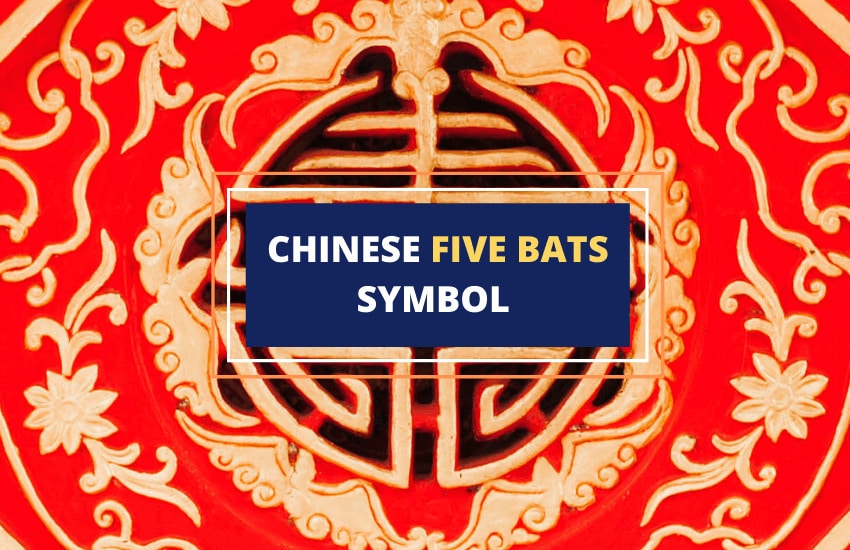
Table of Contents
Cultural representations of animals as good or evil have persisted throughout history. Bats are one of the ubiquitous creatures around the world that can be found in the art of almost every culture. While bats have generally been regarded with superstition and fear in the Western world, the Chinese view them as lucky symbols. Five bats surrounding the Chinese character for longevity is one of the most popular Chinese symbols. Here’s what it means.
Bats and the Five Great Blessings
In Chinese culture, a group of five bats holds auspicious meaning. Known as Wu Fu or Five Blessings, these creatures stand for the love of virtue, health, long life, wealth and peaceful death. Because the number five is considered auspicious in Chinese culture, the five bats together have added symbolism.
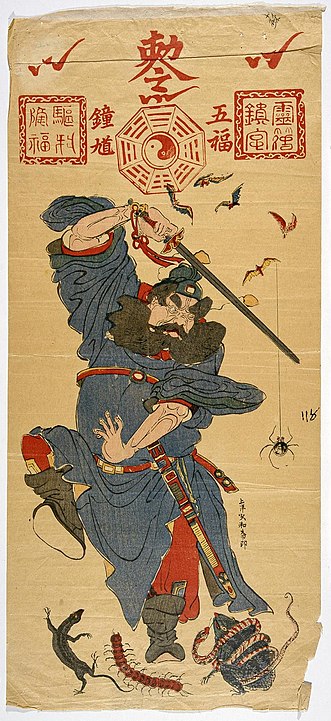
Love of Virtue
The Chinese believe that having high moral standards is crucial for a well-lived life. Since bats symbolize the love of virtue, they’re seen as harmless, fascinating creatures that are vital to the balance of nature around the world. They’re even thought to assist the Chinese deity Zhong Kui who fights ghosts and hunts demons.
Longevity
In Confucian texts that can be traced back around 403 to 221 BCE, bats are described as creatures of permanence. They’re thought to live up to a millennium and even possess immortality. In fact, the mythical Chinese figure Zhang Guolao is one of the Eight Immortals in the Taoist pantheon, and is thought to be a white spiritual bat. What’s more, because bats dwell in caves, which are believed to be the passageway to the realm of the Immortals, this association is further strengthened.
Health
Bats have good eyesight and the ability to hang upside down, associating them with good health. There’s a tradition for Chinese mothers to fasten bat-shaped jade buttons on their babies’ caps, in hopes of bestowing a healthy life for them.
In ancient China, the body parts of bats were used as traditional medicine. People looked for bats that were said to be a thousand years old, silver-like in color, and fed on stalactites or icicle-shaped minerals formed in the caves.
Wealth
In Chinese, the word bat is a homonym of good luck, associating these creatures with good fortune. No wonder, the five bats are commonly featured on greeting cards, which implies that the sender is wishing the receiver to be wealthy and prosperous.
Peaceful Death
For the Chinese, the desire to have a peaceful death is a form of blessing. It’s interpreted as dying naturally in old age without experiencing any pain or suffering. It’s said to be a completion of a life’s work with acceptance, comfort and peace of mind.
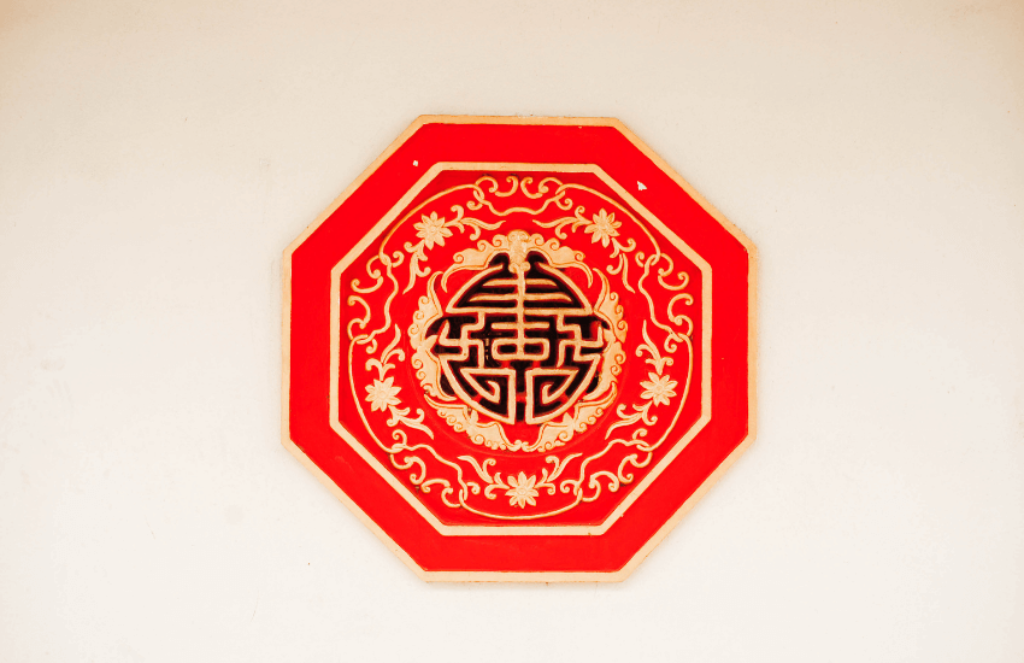
Five Bats with Other Chinese Symbols
The five bats are depicted with other Chinese characters and symbols, and they hold greater significance:
- The red bats are especially lucky because the term red is a homophone for vast in Chinese, which added symbolism to the five bats. It’s said that a painting or decoration with five red bats will give you an extra dose of good luck. In addition to this, the color red is believed to protect someone from misfortune.
- When five bats are pictured with the Chinese character for longevity, it makes a potent symbol for good fortune and long life.
- When bats are depicted with a peach tree growing on a mountain, it simply expresses the greeting, “May you live to be as old as the southern mountains.” This is because the peach is associated with longevity and immortality.
- When the five bats are portrayed with a seascape, this symbolizes the Daoist Isles of the Blessed. It can also be a way to say, “May your happiness be as deep as the eastern sea.”
- Sometimes, bats are illustrated flying among the blue clouds. It’s said that the simplified form of a cloud resembles the shape of the elixir of immortality. Therefore, it means, “May you live a very long life”. Also, it can be a wish for one’s happiness to be as high as the heavens.
- Sometimes the bats are shown flying upside down, and the image holds auspicious connotation. First, it’s said that the character fu for bats has a strong resemblance to the character dao, which means upside down or arrive. When the meanings of fu and dao are combined, it gives the idea that good fortune is raining down from the heavens.
The Symbolism of Bats—and the Chinese Language
Bats have been used as symbols of blessings, and many scholars say that their significance comes from a linguistic coincidence. Since Chinese is an ideographic written language rather than an alphabetic one, it leads to several homonyms—or words with the same pronunciation but with different meaning.
For this reason, words with different meanings become associated with each other based on their sounds when spoken. In Chinese, the word bat is pronounced as fu, which is also the same pronunciation for the word good luck. Therefore, the bat is associated with good luck.
Even if the words for bat and good luck are written in different characters, they are pronounced the same way. When you read the good luck motto that says, “Bats come down from the sky,” it’s also heard as, “Let the good fortune come down on you.”
The History of Bats in Chinese Culture
The pursuit of longevity and immortality has played a notable role in China, which has resulted in several depictions of bats and other related symbols in literature and arts.
In Chinese Literature
The term wufu can be traced back to the Zhou dynasty around 1046 to 256 BCE. It was cited in the Shangshu or Book of Documents, one of the Five Classics of ancient Chinese literature.
Bats first became associated with longevity when it was mentioned in a book about Daosim called Baopuzi, which suggested that bats be used as medicine to improve the chances of a long life. In the text, it’s said that a thousand-year-old bat, which is as white as snow in appearance, should be powdered into medicine and ingested to extend a lifespan to a million years.
In Chinese Art
During the time of the Ming and Qing dynasties, motifs associated with long life became popular, from garments to paintings, drinking cups, decorative vases and furnishings. The most popular were the character for longevity and legendary figures. Soon, immortality themes became common due to Daoism.
Imperial vases decorated with bats were common too, reflecting the taste of the period. Blue and white porcelain decorations became popular, with many featuring small red bats flying among stylized blue clouds, associated with immortality. These motifs were sometimes mixed with other patterns to create artistic art appropriate for many occasions.
By the time of Yongzheng Period in China, around 1723 to 1735, the five bats became a common motif in porcelain. Sometimes, they’re even depicted with peach and peach blossoms, where the former symbolizes longevity and is believed to give immortality to Immortals, while the blossoms represent the spring and the emblem of marriage.
It was also common to see bats decorating places of importance, like palaces, especially the thrones of emperors. There were even decorations that featured bats flying across tapestries and fabrics and carved in ivory and jade. Soon, the depictions of five bats became dominant in artwork, furniture, décor, clothing and jewelry.
The Five Bats and Feng Shui
In China, bat motifs are widely used as feng shui cures for wealth. They’re often seen in amulets, money bowls, Chinese coin tassels, furniture, and cushion designs. They’re thought to ward off evil and counter illnesses.
In Chinese tradition, the number five is regarded as an auspicious number, so the five bats are often used to symbolize Five Blessings. The number itself is associated with the Five Elements, which is a significant principle in Chinese teachings.
However, bats are associated with black magic, witchcraft and darkness in the Western world, so feng shui applications there rarely use them. After all, feng shui cures are deeply influenced by culturally specific symbols, so they may vary from region to region.
Why Do Bats Have Negative Symbolism in Western Culture?
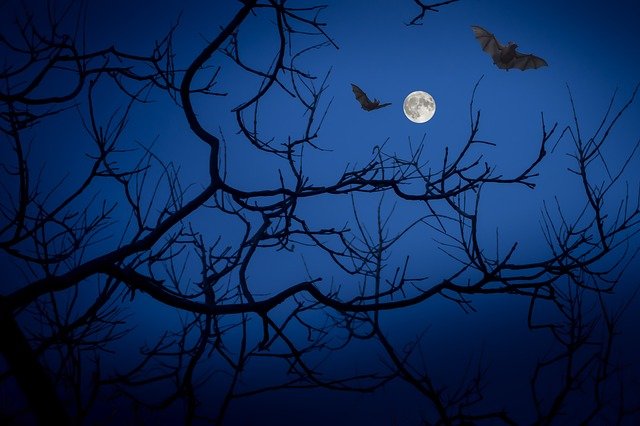
The West seems to have created its own concept of evil bats. As early as the 14th century, bats have been associated with devils and witchcraft, caused by superstitions, legends, folktales, spooky stories and literature about vampires. It’s also said that many religious texts like the Talmud presented bats as negative animals due to their nocturnal habits and dark color. As a result, an irrational fear of bats became prevalent.
On the contrary, the Greco-Roman writers displayed a neutral attitude towards bats, from the eighth century B.C.E. Greek poem The Odyssey to writings of Aristotle and Pliny the Elder. If you’re one of those who were taught to dislike bats, Chinese art can encourage you to view them more favorably. Rather than taking on a menacing character, these creatures look aesthetically pleasing, making them an object of beauty.
In Brief
Often feared in Western culture, bats are actually symbols of blessings in China. The Wu Fu, or Five Blessings, depicts a group of five bats that stands for love of virtue, long life, health, wealth, and peaceful death. The Chinese language influenced the development of their symbolism—and these creatures will likely be a permanent symbol associated with good fortune.




